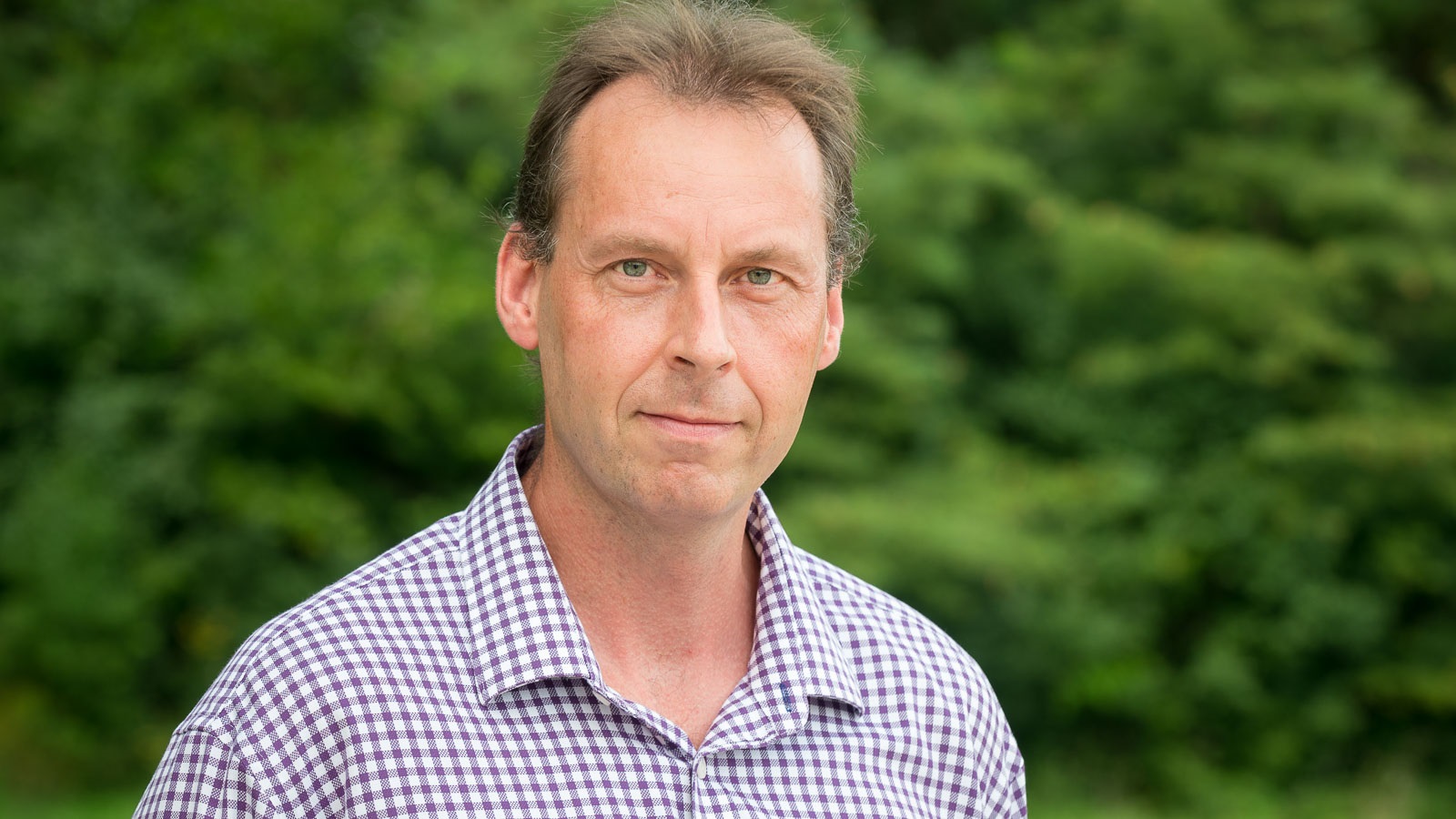Senior chemist Robert (Rob) Tranter of the U.S. Department of Energy’s (DOE) Argonne National Laboratory is no stranger to shockwave chemistry, but he received a happy shock of his own when he recently was named a Fellow of the Combustion Institute.
Members of the international combustion community who are named Fellows of the Combustion Institute are recognized by their peers as being distinguished for outstanding contributions to combustion science, whether in research or in applications.
Tranter is a member of Argonne’s Gas-phase Chemical Dynamics group in the Chemical Sciences and Engineering division, in which he explores the reactions of different chemicals under high temperatures and pressures. To generate these temperatures and pressures, Tranter uses a shock tube — an instrument containing a highly pressurized region of helium gas separated from a less pressurized region of the reaction mixture (test gas).
When the barrier between the two gases is removed quickly, the rapid expansion of the helium compresses the test gas, resulting in the formation of a shock wave that travels at supersonic speeds through the reaction mixture. That wave can be visualized using high-brightness X-rays from Argonne’s Advanced Photon Source, a DOE Office of Science User Facility, as the shock wave dramatically heats up the gas as it passes through it.
“It’s a bit like having an instantaneous oven,” Tranter said. “The gases we have can go from near room temperature to thousands of degrees very quickly, providing the precise conditions at which we want to study the chemistry. With developments in the lab, we have superb control of the formation of the shock waves and can create very reproducible reaction conditions that are crucial to tackling challenging chemical problems.”
Fellows are active participants in the Combustion Institute, as evidenced by the publishing of papers in its affiliated journals, attendance at the International Symposia on Combustion, and/or attendance at Combustion Institute Section meetings. Tranter is also the chair-elect of the Central States Section of the Combustion Institute and a board member of the U.S. Sections of the Combustion Institute.
“This award means a lot to me because the Combustion Institute includes such a wide range of experts in chemical kinetics, and I am honored to be included among them,” Tranter said.
Tranter’s work is supported by DOE’s Office of Science (Office of Basic Energy Sciences).
About the Advanced Photon Source
The U. S. Department of Energy Office of Science’s Advanced Photon Source (APS) at Argonne National Laboratory is one of the world’s most productive X-ray light source facilities. The APS provides high-brightness X-ray beams to a diverse community of researchers in materials science, chemistry, condensed matter physics, the life and environmental sciences, and applied research. These X-rays are ideally suited for explorations of materials and biological structures; elemental distribution; chemical, magnetic, electronic states; and a wide range of technologically important engineering systems from batteries to fuel injector sprays, all of which are the foundations of our nation’s economic, technological, and physical well-being. Each year, more than 5,000 researchers use the APS to produce over 2,000 publications detailing impactful discoveries, and solve more vital biological protein structures than users of any other X-ray light source research facility. APS scientists and engineers innovate technology that is at the heart of advancing accelerator and light-source operations. This includes the insertion devices that produce extreme-brightness X-rays prized by researchers, lenses that focus the X-rays down to a few nanometers, instrumentation that maximizes the way the X-rays interact with samples being studied, and software that gathers and manages the massive quantity of data resulting from discovery research at the APS.
This research used resources of the Advanced Photon Source, a U.S. DOE Office of Science User Facility operated for the DOE Office of Science by Argonne National Laboratory under Contract No. DE-AC02–06CH11357.
Argonne National Laboratory seeks solutions to pressing national problems in science and technology. The nation’s first national laboratory, Argonne conducts leading-edge basic and applied scientific research in virtually every scientific discipline. Argonne researchers work closely with researchers from hundreds of companies, universities, and federal, state and municipal agencies to help them solve their specific problems, advance America’s scientific leadership and prepare the nation for a better future. With employees from more than 60 nations, Argonne is managed by UChicago Argonne, LLC for the U.S. Department of Energy’s Office of Science.
The U.S. Department of Energy’s Office of Science is the single largest supporter of basic research in the physical sciences in the United States and is working to address some of the most pressing challenges of our time. For more information, visit https://energy.gov/science.


